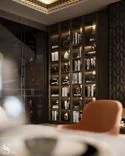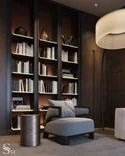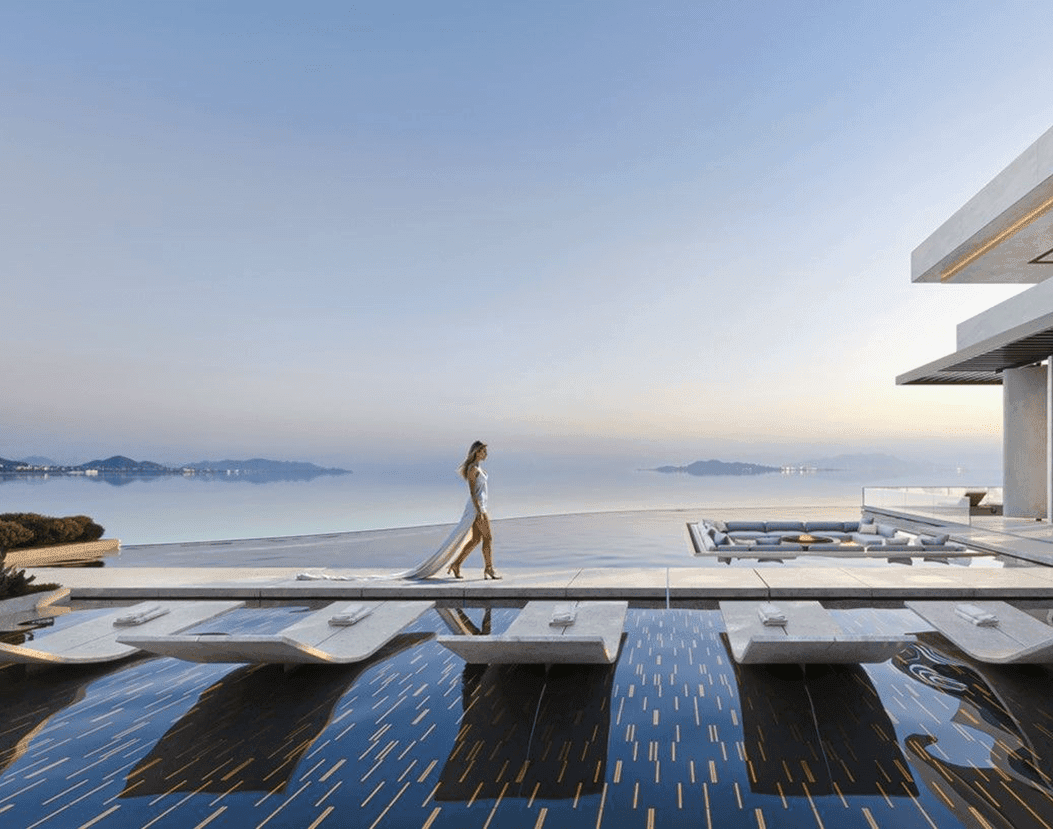About the project:
~ 5 min
Location
Netherlands
Area
217м²
Modern interior of a country house in the Netherlands
The new project of Studia54 is a presentable and laconic interior in the Netherlands. We turned to the aesthetics of privacy, purity of forms and perfection of style. Here you will find luxury and simplicity, natural premium materials, maximum quality and carefully considered lighting.
The location of the Dutch house is in the eastern part of the country. The place is famous for the exceptional beauty of nature, hills, lakes, and a moderate Mediterranean climate, often accompanied by fog. These features influenced architectural and design decisions. When ordering the interior design project for the house, the future owner wanted to see natural materials, an atmosphere of privacy, subdued light, and a specific desire for the introduction of barely noticeable Eastern notes.

The influence of the East can already be seen in the entrance area: the hosts are greeted by a massive door made of dense dark wood with a carved geometric pattern. The door hardware complements it, inspired by the modern era. The continuation of the door is a fully glazed part of the wall, transitioning to the second floor, offering a view of the majestic hills of the Netherlands.


In the hall, dark tones prevail: the walls are veneered, the staircase to the second floor is made of black stone, and the tinted glass railings. The design is complemented by a light floor made of natural Italian marble. The composition is completed by a small table from Antolini, with a tabletop of natural marble and a base in the color of ancient bronze.
To the left of the entrance door is a guest bathroom. Behind the white door, the same black marble and wood are harmoniously combined — both walls are made of veneer. Between them, there is an arch of brass and a relief framing of the sink. The Eastern note is also present here — a small living bonsai brings a dark green accent to the room. The space is softened by the back panel made of light natural fabric with a large texture.

Living Room
The art of the Netherlands is famous for two things: engravings and oil painting. Therefore, it is not surprising that in the living room, the main accent combines cold cut stone and live, bright fire. The fireplace takes a central position in the room, gathering the other parts of the interior around it. Opposite, there is a group of soft furniture: two armchairs and a small sofa from Minotti. All of them are made in the color of ecru from premium fabric and complemented by bright accents — papaya-colored pillows that echo the flames in the fireplace.
Here, the homeowner can settle in the evening with a favorite book, enjoying nature outside the window. It is continued inside the house — designers filled the area with live plants with large green leaves.


To the left of the majestic fireplace, designers placed a small library. Books on Dutch painting and fiction coexist with objects of modern art collected from around the world. Tinted glass, the same as used in creating the railings for the staircase to the second floor, separates the living room from the kitchen.


The Casamilano table keeps up with the main trends in the house and is also made of natural Italian marble. Comfortably seated in designer Margot armchairs, guests and the owner of the house can enjoy the leisurely passage of time, the emerald hills outside the window and the refined atmosphere of the space.
The main accent of the room belongs to the round-shaped window. Its unusual and unique character is complemented by a Japanese tree inside, spreading its golden branches. This installation acts as a decoration rather than performing direct functions, and also serves as a kind of smooth transition from one space to another.
The center of attraction in this part of the house is the kitchen itself. The island, spacious for cooking, is made of MDF panels, noble marble and is complemented by modern appliances that help to solve the most complex culinary tasks.


The unity of the modern interior of the suburban house is ensured by a subtle modulation of color and light, which play evenly around everything. This homogenizing technique is achieved through pinpoint distribution of light accents.
With their help, the finest nuances are achieved, fabric folds and the roughness of wood are worked out with velvety transitions from light to dark tones, and the tiniest flashes of light on sparkling materials resemble the work of Dutch painters from the 17th century.







